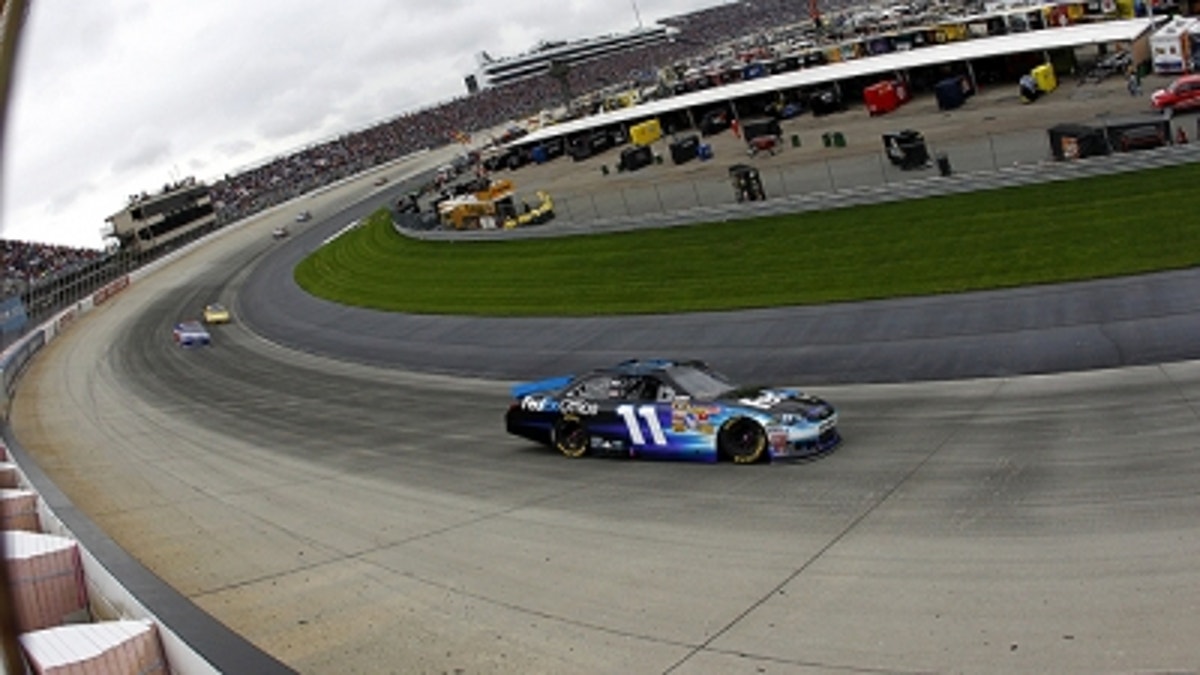
Dover International Speedway is nothing like Darlington Raceway in design or speed, but they are quite similar in one aspect – you don’t want to turn your back on either one.
At both Darlington and Dover, site of Sunday’s FedEx 400 Benefiting Autism Speaks, the track can bite drivers in a heartbeat.
Carl Edwards had that experience when he first encountered the one-mile, high-banked track in a truck.
“The first time I came here was in a blank white 99 truck for Jack (team owner Jack Roush), and I had been practicing on my computer a lot and watched videos and worn out guys like Jeff Burton and Kurt (Busch) and Mark (Martin) and all those guys that had a lot of laps here, like (Greg) Biffle,” Edwards said.
Therefore, Edwards was ready. Or so he thought.
“I came with a ton of confidence,” he said. “I went out there and ran the first 20 laps in practice, and we were just awesome. We were the fastest thing here and I thought, ‘Man, I’ve got this place; this isn’t so bad.’ Then I promptly ran that truck into the front straightaway wall so hard that I thought I broke my ribs. I hit it a ton. I destroyed the truck.
“Doug Richert, my crew chief, called me all sorts of things because it was really stupid to tear up that race truck. Then eight laps into the race with the backup truck we were screaming fast and I drove under Jason Leffler, hit the apron, wrecked Leffler and myself right into the wall, eight laps in. That was a low point that season for me.
“I thought Jack was going to fire me. I thought it was over. I just didn’t respect this place and what it could do to you so quickly. My only word of caution to those guys is don’t get too big of a head at this place because it will get you. Just now in practice I got loose in turns one and two and I thought, ‘Man, I am going to hit the fence.’ It happens so quick. It is a very tough place.”
The track’s 24-degree banking hurls drivers through the corners and onto the short but fast straights, making the track one where there is little time to coast and rest. And a minor miscue on a lap can cost a driver several positions.
“I know that I am mediocre here, at best,” said Denny Hamlin. “I just try to identify why I am so inconsistent at this race track, why I don't have a good feel. Typically, when we run good at a race track, we typically run there good forever. I am able to duplicate that feel that I'm looking for.
“This track is very sensitive to feel in the sense that it's a fast race track that you miss your mark on entry by a little bit and it changes your feel of the car entirely. For me, I try to work on things that help with driver feel in the first practice and then we'll work on tune and setup for the second.”
The bottom line for Hamlin here? Check with someone else.
“When people want suggestions or rookies ask about how to get around a race track, this is not one they look toward me," he admitted.
Kasey Kahne said a number of elements figure into Dover’s unique challenge.
“The concrete is part of it, and then just the high speeds; and there’s some roughness to the track, as well. The entries are really tricky, and then keeping your car to rotate in the center and you get down on the white line again on the second apex to the corners, and in order to get your car to do all that stuff, you just have to figure out how to do it and realize how to do it as a driver and the guys you’re working with.
“So, to me, it’s just a tricky track. The corners look really similar, but it’s as difficult as any track we go to, to get the whole track right and to get that balance throughout a whole 400-lapper here.”
Qualifying for Sunday’s race is scheduled at noon ET Saturday. SPEED will carry the session.
Mike Hembree is NASCAR Editor for SPEED.com and has been covering motorsports for 30 years. He is a six-time winner of the National Motorsports Press Association Writer of the Year Award.
